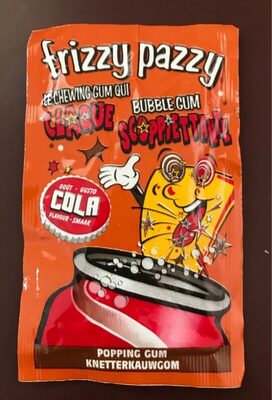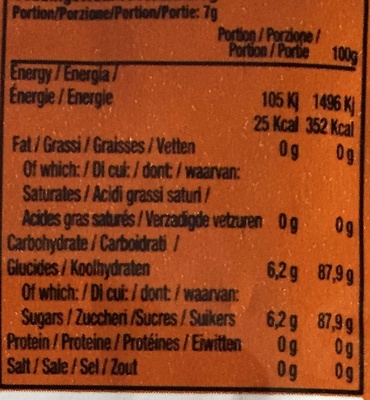Popping Gum goût Cola - Frizzy Pazzy - 7 g
This product page is not complete. You can help to complete it by editing it and adding more data from the photos we have, or by taking more photos using the app for Android or iPhone/iPad. Thank you!
×
Barcode: 8410576012666 (EAN / EAN-13)
Common name: Le Chewing-Gum qui claque
Quantity: 7 g
Brands: Frizzy Pazzy
Categories: Snacks, Sweet snacks, Confectioneries, Candies, Chewing gum
Labels, certifications, awards: Made in Spain
Manufacturing or processing places: Espagne
Stores: Netto
Countries where sold: France
Matching with your preferences
Environment
Carbon footprint
Packaging
Transportation
Report a problem
Data sources
Product added on by tacite
Last edit of product page on by kiliweb.
Product page also edited by openfoodfacts-contributors, packbot, quechoisir, roboto-app, yuka.YjR3ZEVJTTkvZmt1aHNZR3h4UEk4TXh1eThhWGVuNktldGNNSWc9PQ, yuka.YlljY0RKOGx2dk1MeC9ZVXBSSFRwZlZTOTVHeUFrS3ZFTTA2SUE9PQ, yuka.ZTdvaExhTUxtZlFKaHNVaW9qcjZ5UEYzNnAyWFpVL3FHYkFvSVE9PQ, yuka.sY2b0xO6T85zoF3NwEKvllRpXfv_phH_LEzkwXTTw8eVJbLMMNtA4YLXL6g, yuka.sY2b0xO6T85zoF3NwEKvlm56AsrdpzTDG0PWglaQ4NaAdqDxf89VuLPbMqg.










